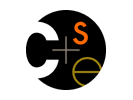
|

CSE 410 Computer Systems - Homework 8
- Spring 2009
|
|
Due: Thursday, June 4, at 11 pm.
Some questions about virtual memory and paging. Adopted or adapted from exercises
in Patterson and Hennessy and in Silberschatz et al.
- Consider a virtual memory system with the following properties:
- 40-bit virtual byte addresses
- 16KB pages
- 36-bit physical byte addresses
What is the total size of the page table for each process on this processor
under the following assumptions: single-level page table; the valid, protection,
dirty, and use bits take a total of 4 bits; and that all the virtual pages
are in use. (Assume that disk addresses of pages on disk are not stored in
the page table.
- Suppose we have a two-dimensional array A:
int A[][] = new int[100][100];
where A[0][0] is at location 200 in a paged memory system with pages of size
200, and each int occupies one memory location. As is true in Java, the array
is stored in row-major order, meaning that the ints in row 0 occupy the first
100 locations assigned to the array, row 1 occupies the next 100 locations,
and so forth. A small process that manipulates the array resides
in page 0 (locations 0 to 199). Thus every instruction fetch will be from page
0.
Assume that we run each of the following nested loops on a memory system
that has three total page frames. How many
page faults are generated by each of the following array-initialization loops,
using LRU replacement and assuming that the first page frame contains the process
code and the other two are initially empty?
-
for (int j = 0; j < 100; j++)
for (int i = 0; i < 100; i++)
A[i][j] = 0;
-
for (int i = 0; i < 100; i++)
for (int j = 0; j < 100; j++)
A[i][j] = 0;
- A certain computer provides user processes with a virtual memory space
of 232 bytes. The computer has 220 bytes of physical memory. The virtual
memory is implemented by paging and the page size is 4,096 bytes. A user
process generates the (decimal) virtual address 11,123,456. Explain how the
system establishes the corresponding physical location. What part of the
translation is done purely in hardware and what part depends on software?
- Consider a paging system with a single-level page table
stored in memory.
- If a simple memory reference takes 100 nanoseconds, how long does a
paged memory reference take? (Assume that there are no caches involved.)
- If we add a TLB (translation lookaside buffer) and 96% of all page
table references are found in the TLB, what is the effective memory reference
time? (Assume that retrieving a page-table entry from the TLB can be
done in zero time if the entry is present.)
- Assume that we have a demand-paged memory. Memory access
time is 100 nanoseconds. It takes 8 milliseconds to handle a page fault if
an empty page is available or the replaced page is not modified, and 20 milliseconds
if the replaced page is modified and has to be written out to disk. Assume
that the page to be replaced is modified 70% of the time. What is the maximum
acceptable page-fault rate (fraction of memory references that generate a
page fault) for an effective access time of no more than 200 nanoseconds?
- Suppose we have a demand-paging system. It seems to
be running slowly and when we measure the percentage of time that parts of
the system are in use, we get the following numbers:
- CPU utilization: 20%
- Paging disk utilization: 98%
- Other I/O devices: 5%
Which, if any, of the following will probably improve CPU utilization? Explain
your answer.
- Install a faster CPU
- Get a larger paging disk
- Get a faster paging disk
- Increase the number of active processes
- Decrease the number of active processes
- Install more main memory
Turn-in Instructions:
Use the turn-in drop box link on the main course web page to submit a file containing
your solutions. You can use any common file format, including plain text, word,
or pdf. If you wish, you could also scan in a hand-written solution and submit
that, but if you do that, please be sure your handwriting is neat and
legible. Please be sure to include your name at the top of your answers.
|
 |
Computer Science & Engineering
University of Washington
Box 352350
Seattle, WA 98195-2350
(206) 543-1695 voice, (206) 543-2969 FAX
[comments to Hal Perkins]
|


 CSE Home
CSE Home  About Us
About Us Search
Search Contact Info
Contact Info